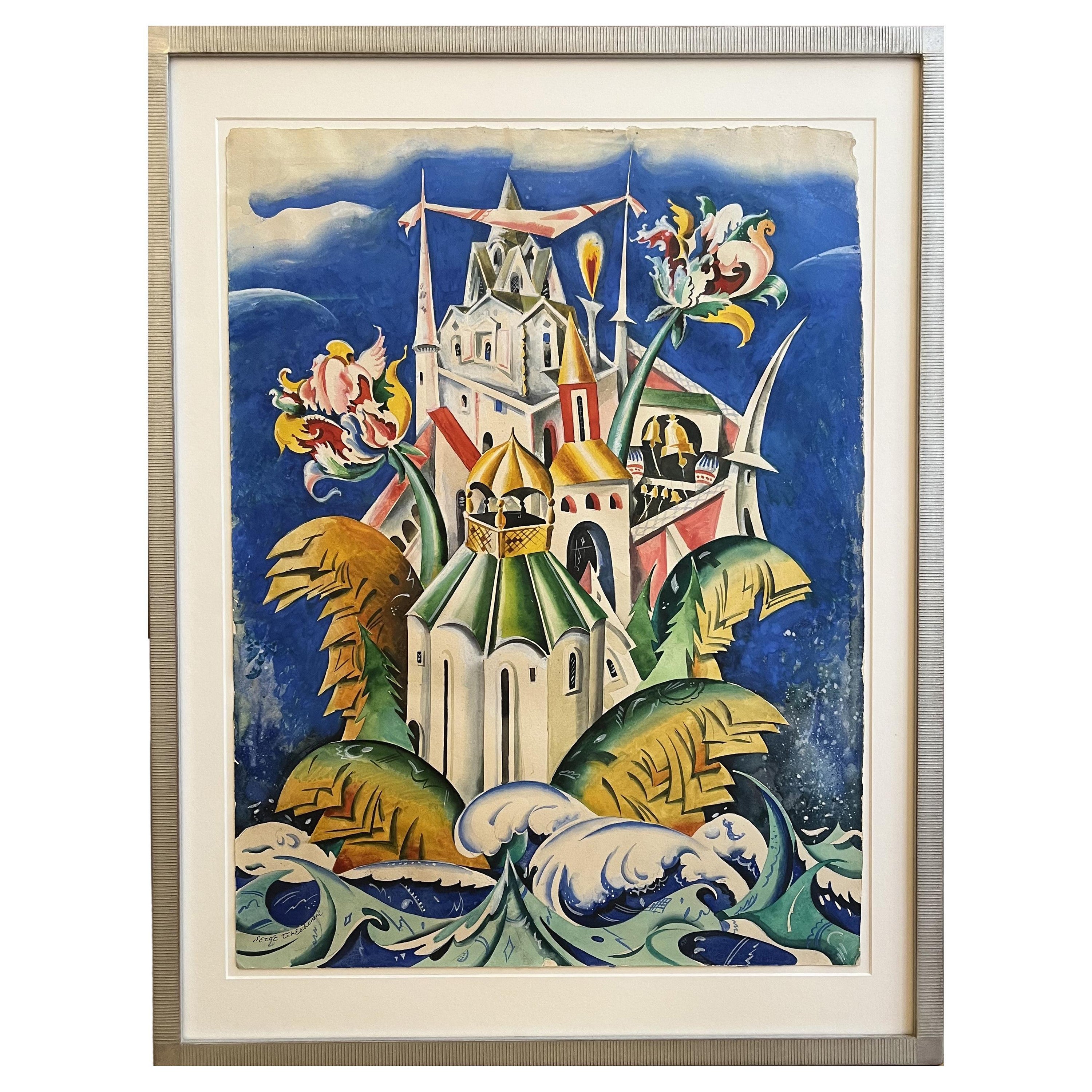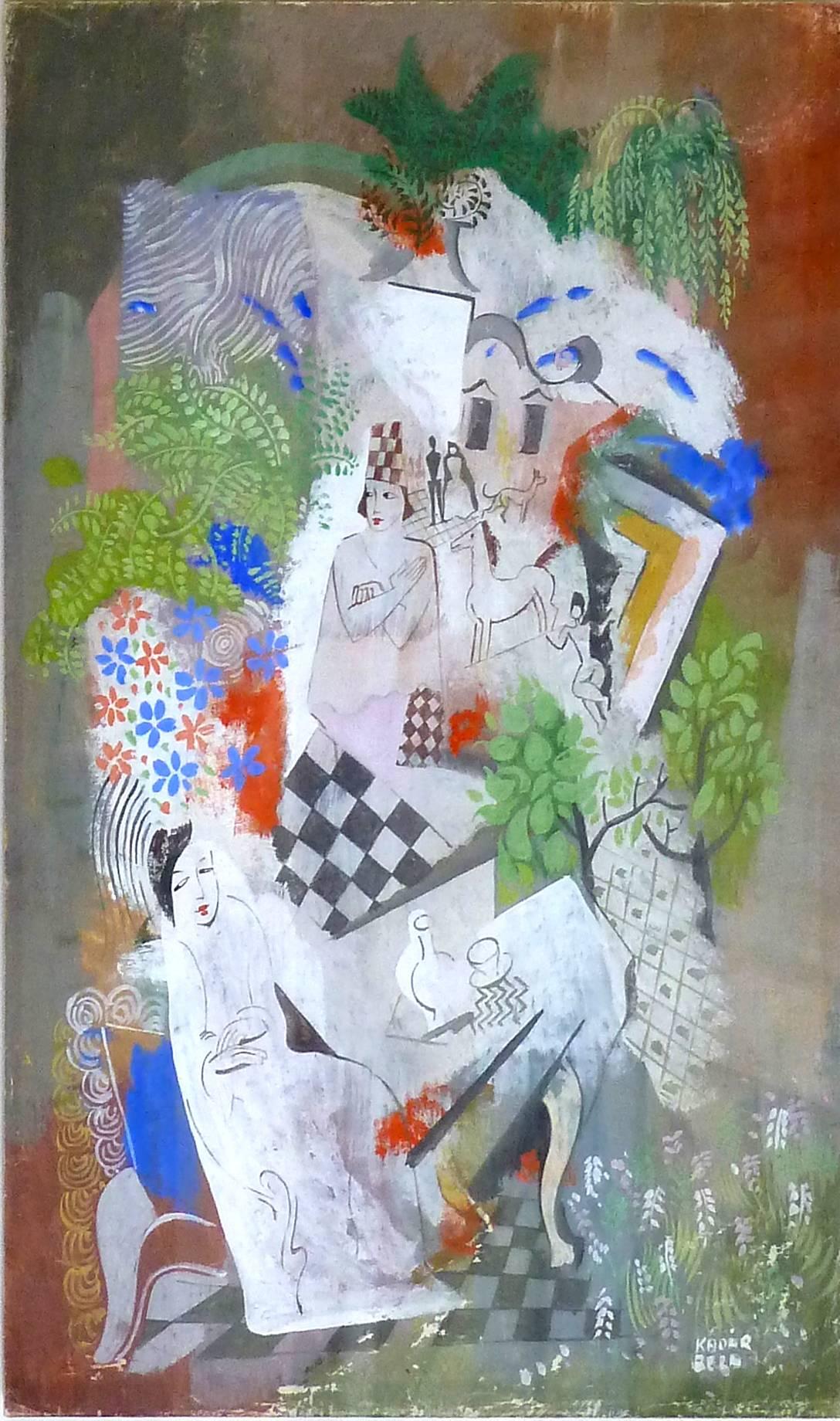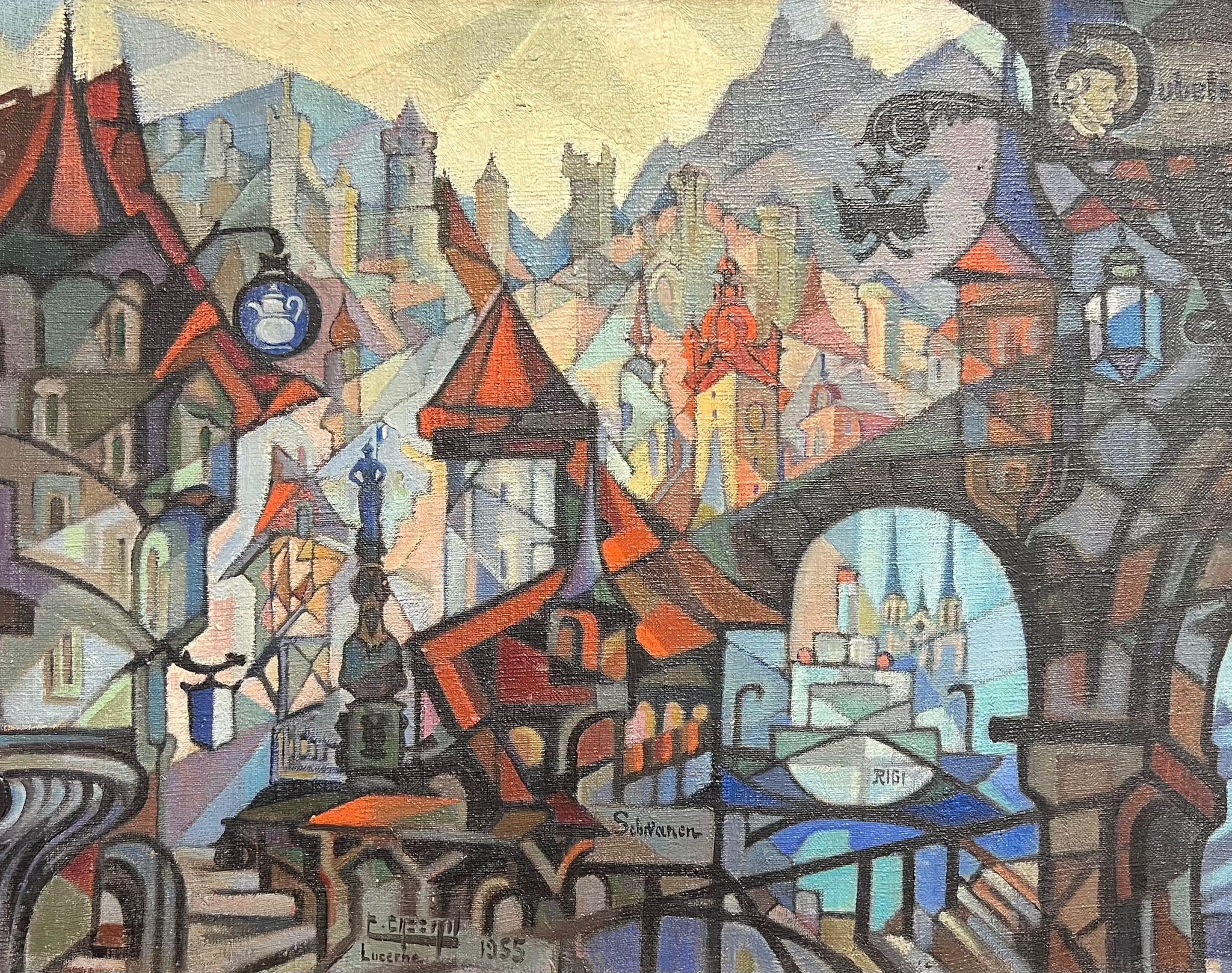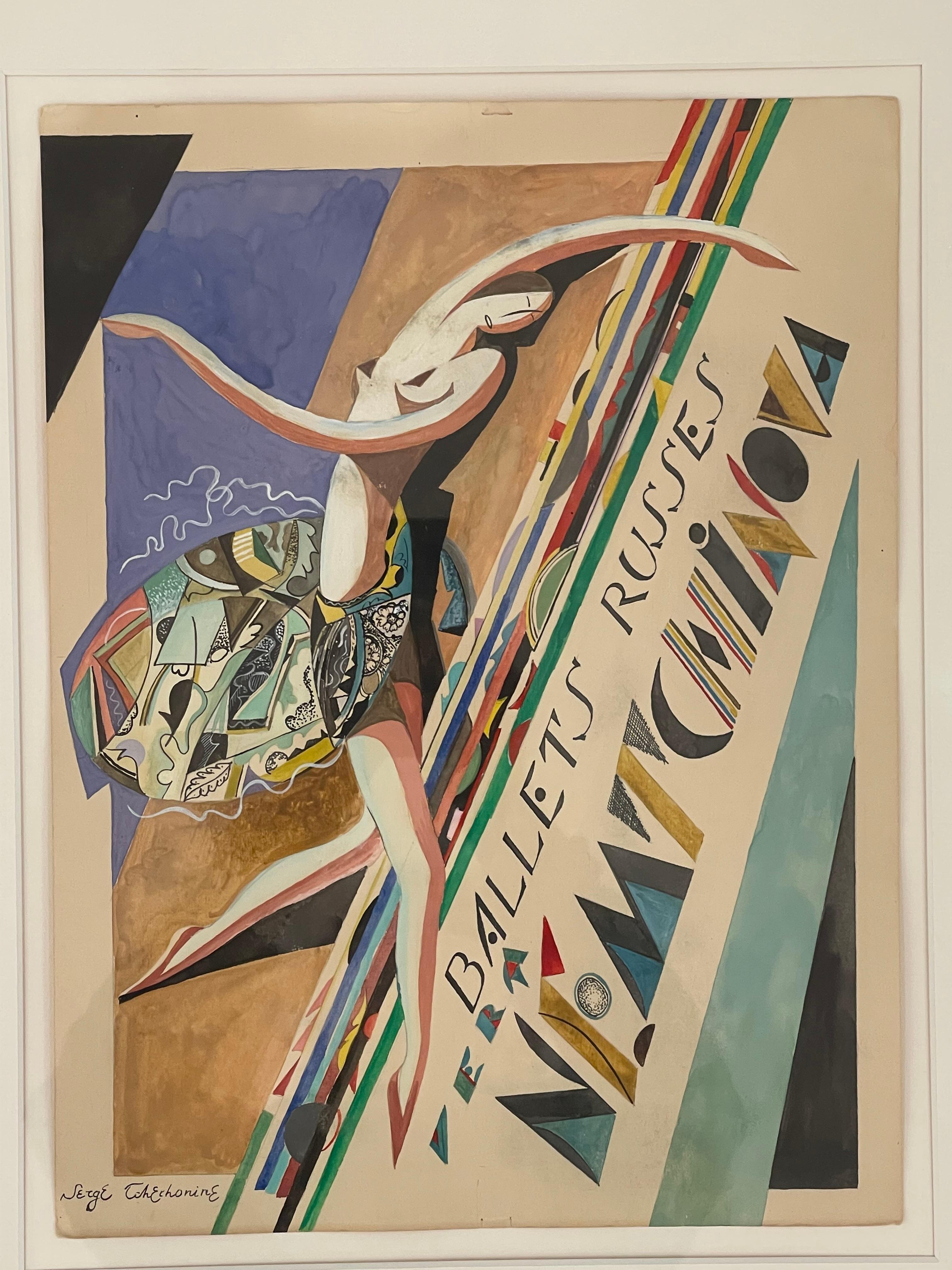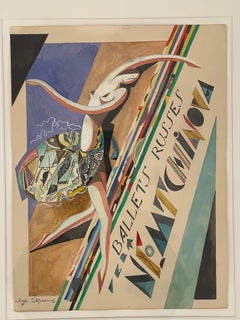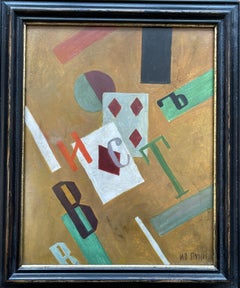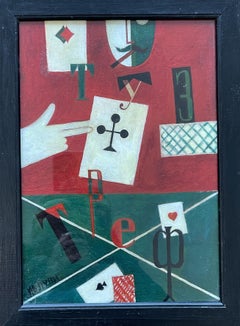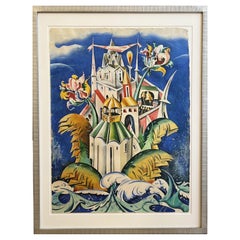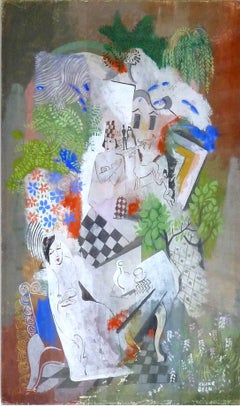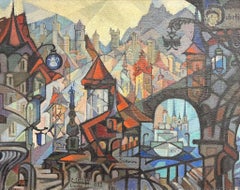Items Similar to Serge CHEKHONIN (1878-1936), “Enchanted Castle”
Want more images or videos?
Request additional images or videos from the seller
1 of 11
Sergey ChekhoninSerge CHEKHONIN (1878-1936), “Enchanted Castle”
$7,777.89
£5,733.77
€6,500
CA$10,761.52
A$11,676.79
CHF 6,194.32
MX$143,390.11
NOK 76,603.64
SEK 72,543.56
DKK 49,490.19
About the Item
In a 1929 article of a french newspaper "L'Homme libre," Serge Chekhonin is described as having a prestige comparable to that of Bakst or Benois. He is praised for his talent as a decorator, his refinement of colors, his technical mastery, and his deeply Russian art. His diverse work evokes the versatility of Renaissance artists.
Serge Vassilievitch Chekhonin, born in 1878 to a railroad machinist, began working at a young age to support himself. He studied at the Drawing School of the Imperial Society and the Tenishev School in Petrograd, where he was a pupil of Ilya Repin. A talented pottery artist, Chekhonin contributed to major building decorations, including the "Metropol" hotel in Moscow.
As a prominent figure of the second generation of the "World of Art" movement, he gained recognition for his graphic art and innovative multi-color printing on fabric. Chekhonin was instrumental in Soviet book art and served as the artistic director of the State Porcelain Factory.
This painting, with its meticulously painted details and bright colors, evokes Russian traditional pottery. It imitates the waves of Gzhel but incorporates more modern, constructivist elements.
Gouache on paper.
Signed in the lower left corner.
Dimensions without frame: H: 62 cm W: 44 cm
Dimensions with frame: H: 74 cm W: 57 cm D : 2 cm
- Creator:Sergey Chekhonin (1878 - 1936, Russian)
- Dimensions:Height: 24.41 in (62 cm)Width: 17.33 in (44 cm)
- Medium:
- Movement & Style:
- Period:
- Condition:
- Gallery Location:Paris, FR
- Reference Number:Seller: 3501stDibs: LU2791215243542
About the Seller
No Reviews Yet
Vetted Professional Seller
Every seller passes strict standards for authenticity and reliability
1stDibs seller since 2024
- ShippingRetrieving quote...Shipping from: Paris, France
- Return Policy
Authenticity Guarantee
In the unlikely event there’s an issue with an item’s authenticity, contact us within 1 year for a full refund. DetailsMoney-Back Guarantee
If your item is not as described, is damaged in transit, or does not arrive, contact us within 7 days for a full refund. Details24-Hour Cancellation
You have a 24-hour grace period in which to reconsider your purchase, with no questions asked.Vetted Professional Sellers
Our world-class sellers must adhere to strict standards for service and quality, maintaining the integrity of our listings.Price-Match Guarantee
If you find that a seller listed the same item for a lower price elsewhere, we’ll match it.Trusted Global Delivery
Our best-in-class carrier network provides specialized shipping options worldwide, including custom delivery.More From This Seller
View AllSergey CHEKHONIN (1878 – 1936), theater poster project
Located in Paris, FR
Serge Tchekhonine was a Russian artist who studied applied drawing, ceramics, and pottery in St. Petersburg. He settled in France in 1928, gaining attention for his finely crafted ce...
Category
1930s Modern Abstract Drawings and Watercolors
Materials
Paper, Ink, Watercolor, Gouache
Jean POUGNY born Iwan Albertovich PUNI (1890–1956), "The Ace of Diamonds"
By Jean Pougny
Located in Paris, FR
Iwan Albertovich Puni (also known as Jean Pougny) was a Russian avant-garde artist (Suprematism, Cubo-Futurism) who later became French. His style evolved towards Lyric Primitivism...
Category
1910s Abstract Paintings
Materials
Oil, Cardboard
Jean POUGNY born Iwan Albertovich PUNI (1890–1956), "The Ace of Clubs"
By Jean Pougny
Located in Paris, FR
Iwan Albertovich Puni (also known as Jean Pougny) was a Russian avant-garde artist (Suprematism, Cubo-Futurism) who later became French. He evolved towards Lyric Primitivism, influen...
Category
1910s Abstract Geometric Abstract Paintings
Materials
Oil, Cardboard
Boris LACROIX (1902-1984), wallpaper design
Located in Paris, FR
Boris Lacroix (born in Paris in 1902, where he died in 1984) was a French Art Deco architect and designer. Boris Lacroix served as the artistic director of the Vionnet fashion house ...
Category
1930s Conceptual Landscape Paintings
Materials
Paper, Gouache
Projet de papier peint, paysage chinois
Located in Paris, FR
- Gouache on paper.
- Circa 1920.
Dimensions
H: 49 cm W: 50 cm/H: 19.29 in W: 19.69 in (unframed
H: 71 cm W: 71 cm/H: 27.95 in W: 27.95 in (framed)
Category
Early 20th Century Art Deco Landscape Paintings
Materials
Paper, Gouache
Paul COLIN (1892 – 1986), cubist composition
By Paul Colin
Located in Paris, FR
Paul Colin (1892–1986), a painter, illustrator, set designer, and major poster artist of the 20th century, is renowned for his influence on Art Deco. He grew up in Nancy, a hub of av...
Category
Early 20th Century Abstract Abstract Drawings and Watercolors
Materials
Paper, Gouache
You May Also Like
Sergey CHEKHONIN (1878-1936), “Enchanted Castle”
Located in Paris, FR
In a 1929 article of a french newspaper "L'Homme libre," Serge Chekhonin is described as having a prestige comparable to that of Bakst or Benois. He is praised for his talent as a decorator, his refinement of colors, his technical mastery, and his deeply Russian...
Category
Early 20th Century Russian Art Deco Paintings
Materials
Paper
Fantasy
By Bela Kadar
Located in London, GB
BELA KADAR 1877-1956
Budapest 1877-1956 (Hungarian)
Title: Fantasy, circa 1940
Technique: Original Hand Signed Gouache on paper
size: 46.2 x 29.4 cm / 18.2 x 11.6 in
Additional Information: This work is a guache painting by the famous Hungarian artist Bela Kadar.
It is hand signed in pencil "Kadar Bela" in the lower right corner of the paper.
Exhibitions:
New York, Shepherd & Derom Galleries, Hungarian Modernism, 29 April-2 July 2010, no.12.
Tel Aviv, Galerie le Minotaure...
Category
1940s Cubist Figurative Drawings and Watercolors
Materials
Gouache
$27,500
Mid-20th Century Cubist Abstract Cityscape of Lucerne Switzerland Oil Painting
Located in Cirencester, Gloucestershire
Cubist Cityscape of Lucerne
signed by Colbert Cassan (1899-1979)
oil on canvas, unframed
dated 1955
Canvas: 20 x 25.5 inches
Provenance: private collection
Condition: very good condi...
Category
Mid-20th Century Cubist Abstract Paintings
Materials
Oil
Theater Interior Design
By Serge Ferat (Sergei Nicolaevitch Comte de Jastrebtsov)
Located in London, GB
SERGE FERAT 1881-1958
(Le Comte Sergueï Yastrebzov) Moscow 1881-1958 Paris (Russian/French)
Title: Theater Interior Design
Technique: Original Signed Gouache Painting on paper
siz...
Category
1890s Cubist Interior Paintings
Materials
Gouache
Mandala Judaica Post Soviet Russian Avant Garde Israeli Leviathan Group Painting
By Shmuel Ackerman
Located in Surfside, FL
Shmuel Ackerman, (Shmuel Akkerman), Israeli, born 1951, Soviet Union, active in Israel and France.
Shmuel Ackerman was born in Ukraine to a religious family. In 1973, he immigrated to Israel and settled in Jerusalem. From his earliest work, he created abstract symbolist art influenced by folkloristic motifs and modern Western art...
Category
20th Century Contemporary Abstract Paintings
Materials
Paper, Acrylic
Monastery, Original oil Painting, Ready to Hang
Located in Granada Hills, CA
Artist: Alexander Litvinov
Work: Original oil painting, handmade artwork, one of a kind
Medium: Oil on Cardboard
Style: Impressionism
Year: 1990
Title: Monastery
Size: 11.5" x 15.5"...
Category
2010s Impressionist Figurative Paintings
Materials
Oil, Cardboard
More Ways To Browse
Antique Castles
Antique Soviet
Antique French Newspaper
Tablescape Art
Wine Glass Oil Painting
Wine Glass Still Life
Colorful Art Fruit
Michael Klein
Oil Paintings Of Pears
Peonies In Vase Painting
Pocket Book
Realism Painting Fruit
Still Life Painting Pineapple
Vanitas Skull
Wine And Fruit Paintings
Blueberry Painting
Diane Monet
French Oil Painting Kitchen
